Looking for a peaceful escape from the hustle and bustle of Southern California? Look no further than the Channel Islands, a string of under-explored islands just off the coast. With serene scenery and epic sunsets, these islands offer a unique camping experience for those seeking a quiet retreat.
Dubbed “North America’s Galapagos,” the Channel Islands are home to over 150 endemic species of plants and animals, making them a must-see destination for nature lovers. Despite their proximity to a densely populated area, the islands have remained largely untouched for over 13,000 years, with the exception of Santa Catalina Island. While not as easily accessible as other tourist destinations, a visit to the Channel Islands promises a meaningful experience, even on a short day trip from a Southern California harbor.
Channel Islands National Park
The Channel Islands National Park is a group of five islands located off the coast of Ventura, California. These islands are Santa Cruz, Anacapa, San Miguel, Santa Rosa, and Santa Barbara. The National Park Service (NPS) aims to preserve the natural beauty of the islands by minimizing human impact.
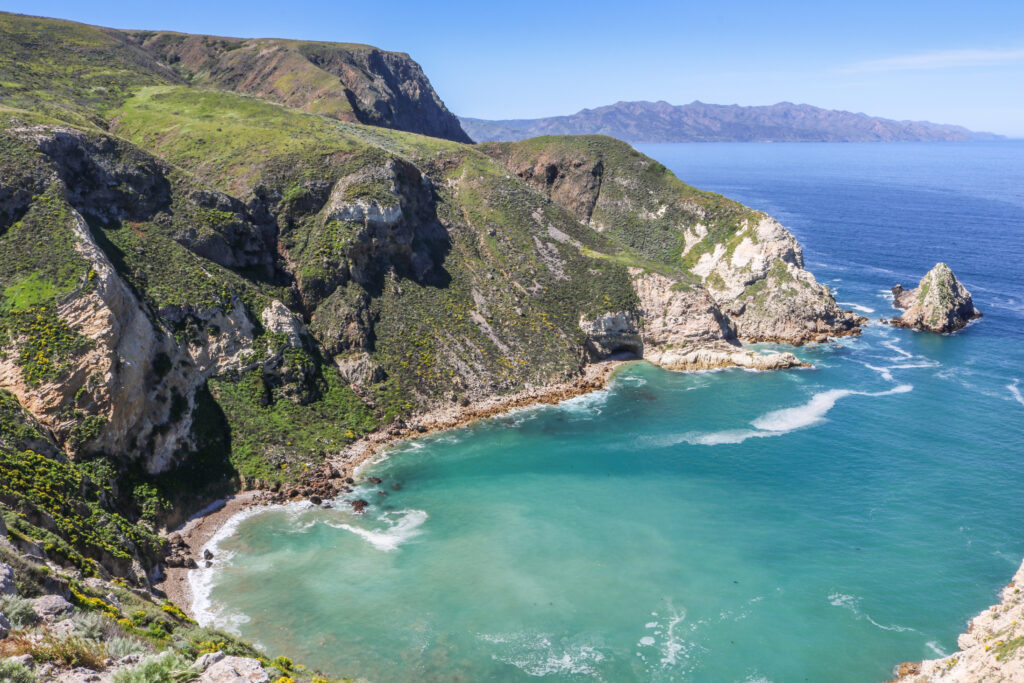
Santa Cruz
Santa Cruz is the largest and most diverse of the Channel Islands, covering 96 square miles. The island features two rugged mountain ranges, including the tallest peak in the park, 2450ft Mt Diablo. With 77 miles of coastal cliffs and abundant native plant and animal life, it’s a popular destination for hikers and campers.
The island is home to two unique species, the scrub jay and the island fox. The scrub jay is monogamous and only found on Santa Cruz, while the island fox has distinct subspecies on six of the Channel Islands. Visitors can explore the island’s 10,000-year history of human settlement by visiting over 3000 archaeological sites.
One of the highlights of Santa Cruz is the painted cave, a sea cave with striking colors created by algae, lichen, and different rock types. Visitors can also camp at Scorpion Canyon, the island’s primitive campground, and reserve a spot in advance through the NPS.
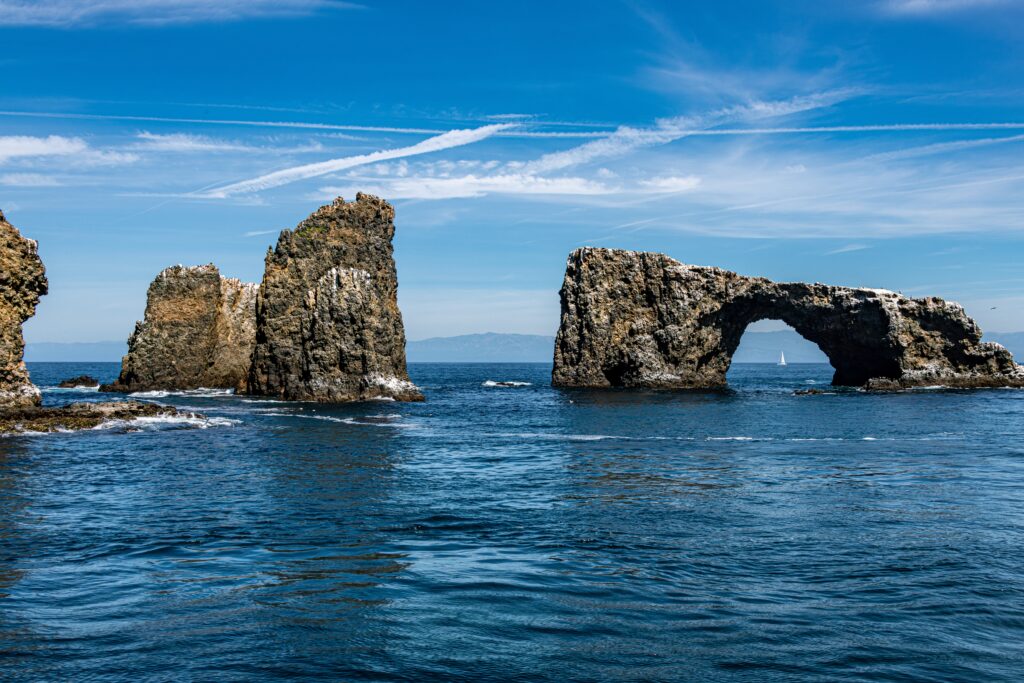
Anacapa
Anacapa is a three-islet sliver of land located 11 miles from the mainland. The island’s name, Anayapax, means “illusion” or “mirage” in the language of the Chumash, the island’s original inhabitants. Visitors can enjoy easy year-round hikes to a stolid 1932 lighthouse and stunning westward and mainland views.
Anacapa is home to ground-nesting western gulls, and visitors can spot abalone shells left by the Chumash people up to 5000 years ago. The island’s campsites are a half-mile climb up 157 stairs from the boat landing site, and visitors must bring their own water.
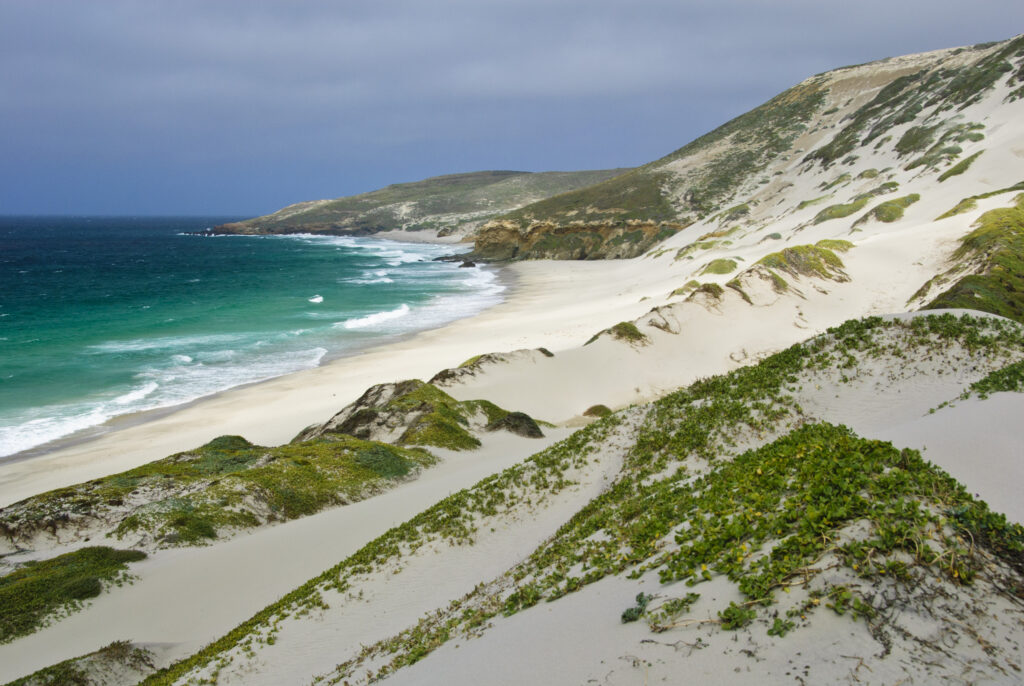
San Miguel
San Miguel is known for its wind-swept, foggy, and cold weather. However, on sunny summer days, visitors can observe the island’s 30,000 pinnipeds, including northern elephant seals, California sea lions, northern fur seals, and harbor seals. Visitors can hike to Point Bennett, reached via a 16-mile ranger-led hike, to see the seals up close.
Along the way, visitors can pass the ghostly Caliche Forest, composed of calcium carbonate casts of roots formed around 14,000 years ago. San Miguel is home to endemic flora such as giant coreopsis, poppies, dudleya, locoweed, and buckwheat. The island’s campsites are a steep 1¼-mile hike from the beach landing site, and visitors must bring their own water.
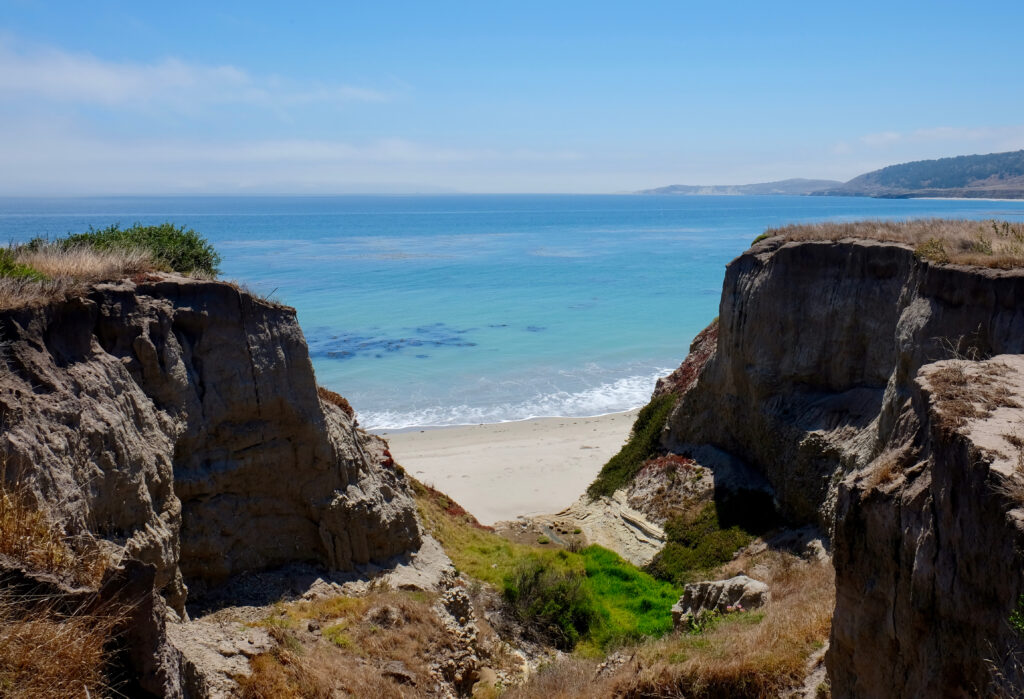
Santa Rosa Island
Santa Rosa Island covers 84 square miles and is home to 13,000-year-old human bones, the oldest human remains ever found in North America. Visitors can explore the island’s trails and search for Channel Island natives such as the island spotted skunk, the dwarf island gopher snake, and the island fence lizard.
Nature has bounced back impressively on the island, and visitors can explore the grove of Santa Rosa Island Torrey Pines, the world’s rarest pine tree, and a relic from an ancient Pleistocene-era forest. Visitors can also hike along Water Canyon Beach, a spectacular and nearly deserted two-mile strip of white sand directly south of the landing pier.
The island’s campsite is a flat 1½-mile walk from the pier, and there is potable water available.
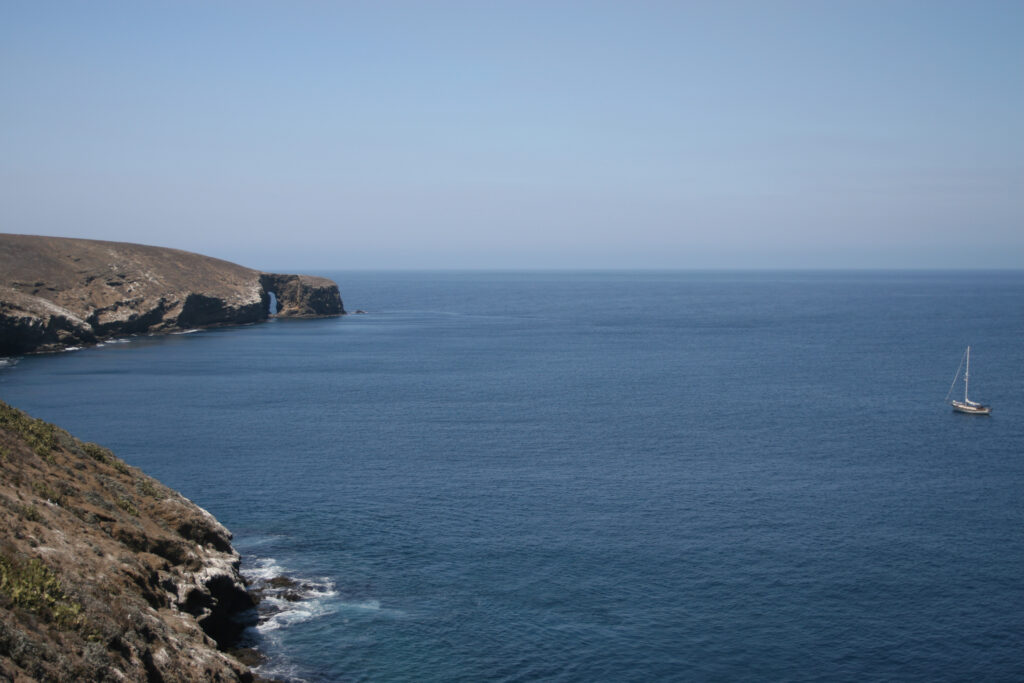
Santa Barbara Island
Santa Barbara Island is the smallest of the Channel Islands, covering only one square mile, and is the least visited island in the national park, seen by fewer than 750 people annually. Visitors can enjoy the island’s five miles of rolling trails in near solitude.
The island is a great spot for birdwatching, with sightings of pinnipeds, sea birds, and other marine life. Visitors can also explore the island’s steep-sided isle for sightings of unique flora and fauna.
Boat trips to the Channel Islands National Park are available from Ventura Harbor and nearby Oxnard. Island Packers runs boat services to the park, with day trips most days to Anacapa and Santa Cruz islands. Boats run less often to Santa Rosa and San Miguel, and there are currently no boats to Santa Barbara. Visitors can also reach the islands through private boat charters and multi-day cruises, some focusing on diving in the rich and pristine waters of the national park.
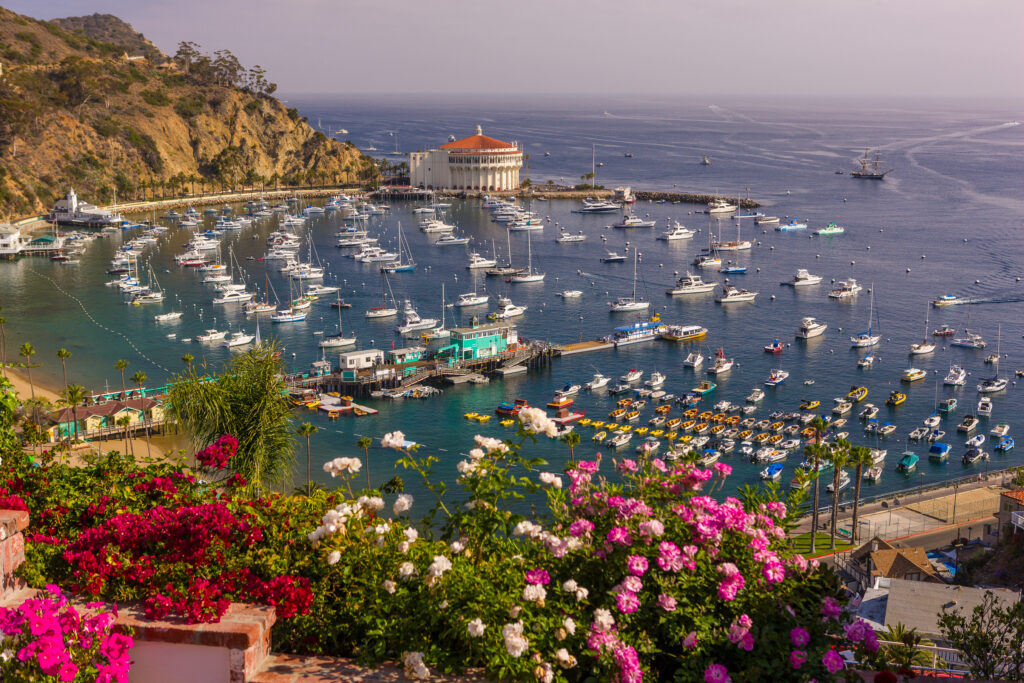
Non-National Park Channel Islands
Beyond the boundaries of the national park, there are more islands to explore. Santa Catalina, San Nicolas, and San Clemente Islands are just a few examples.
Santa Catalina
Santa Catalina is a popular vacation spot that offers various creature comforts and activities. Hollywood stars have been visiting the island since 1911 for sportfishing and expensive nights out at the art deco casino in Avalon. The red-roofed casino is still a popular attraction, but visitors can also enjoy outdoor activities, city-center beaches, dining and lodging options, and sporting history. Baseball fans can visit the site of the original Wrigley Field, which is now a public golf course.
The narrow isthmus that almost divides the island in two is home to the village of Two Harbors, which offers a chance to get away from the Avalon bustle and camp in relative peace and quiet. When visiting Santa Catalina, it is recommended to rent a golf cart to get around instead of a car, as rushing is not necessary on the island.
To get to Santa Catalina, fast and slow ferries run daily from Long Beach, Dana Point, and San Pedro. The glitterati opt for pricey helicopter transfers. There are many options to stay on Catalina, from upscale hotels to less expensive B&Bs. Camping is possible in Avalon and Two Harbors.
San Nicolas and San Clemente Islands
San Nicolas and San Clemente Islands are both US naval base islands that the public is barred from landing on. However, scuba diving, boating, and swimming in approved waters are allowed, and many boat trips run out here from the mainland.
San Nicolas Island is where the ‘Lone Woman of San Nicolas Island’ lived, the last Native American to live on the islands and the inspiration for Karana, the heroine of Scott O’Dell’s Newbury-award-winning novel, Island of the Blue Dolphins. Before becoming a launch platform for missile testing, San Nicolas Island was a peaceful home to the Lone Woman.
San Clemente Island is the southernmost Channel Island and is an important elephant seal rookery. It is also the spot where human Navy SEALs train for missions, such as the raid against Osama Bin Laden’s compound in Pakistan, for which a replica was built on the island. It’s also a naval ship-to-shore firing range.
The only way for civilians to visit San Nicolas and San Clemente Islands is on scuba diving, fishing, and boating trips arranged through commercial operators on the mainland.






